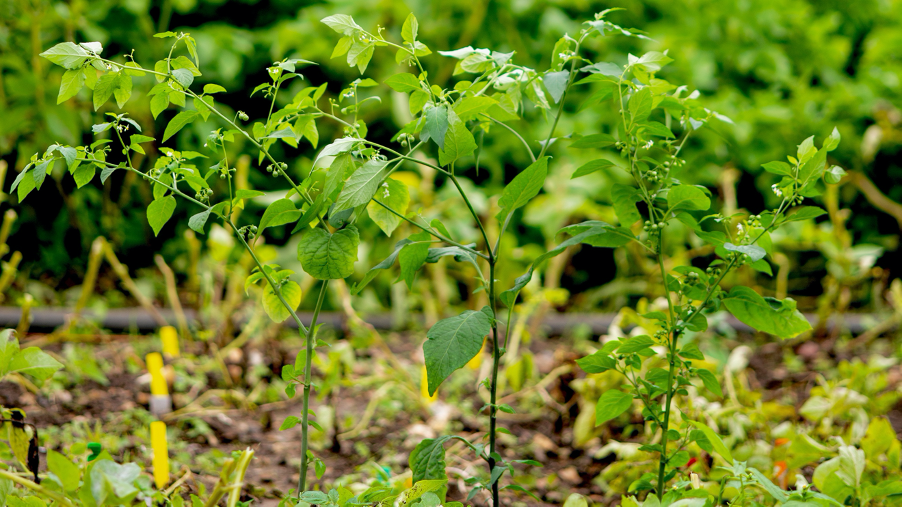New resistance genes against the potato disease Phytophthora are discovered every year. However, it is only a question of time for the pathogen to find a way to break through the resistance. British researchers have now discovered a more robust line of defence. Drawback: it is a genetically modified organism (GMO).
Common resistance genes recognise the so-called avirulent protein of Phytophthora. This causes a rapid immune response: the plant kills the affected cells, preventing the disease from spreading. However, Phytophthora is able to mutate the avirulent genes, causing the potato to no longer recognise the threat and thus thwarting the immune response. Most of these resistance genes originate from wild potato strains found in the Andes.
Distant cousin
British researchers have now discovered a new gene in Solanum americanum, a distant cousin of the potato from the nightshade family. Wageningen researchers who contributed to the study found that potatoes with this gene are resistant to nineteen strains of Phytophthora. ‘This resistance gene can recognise so-called conserved avirulent-genes pertaining to the potato disease. We expect that Phytophthora will not be able to easily mutate it’, says Vivianne Vleeshouwers of WUR. ‘Thus, this resistance has a broad spectrum against Phytophthora.’
This resistance gene is able to recognise so-called conserved avirulent-genes pertaining to the potato disease
Vivianne Vleeshouwers
GMO
The distant cousin is unaffected by Phytophthora and is seen as a non-host. The gene is expected to keep the potato blight at bay for much longer.
Prolonged resistance could reduce the need for chemical pesticides in potato cultivation. There is, however, a drawback to this gene: it is a GMO. The resistance gene from the distant cousin can only be added to the potato through transgenesis. This has brought the further development of this potato to a stand-still in the EU. However, other countries, such as the US and the UK after Brexit, can still continue its development.
You may also like:

 Solanum americanum, with the R-gene. Photo: WUR.
Solanum americanum, with the R-gene. Photo: WUR.